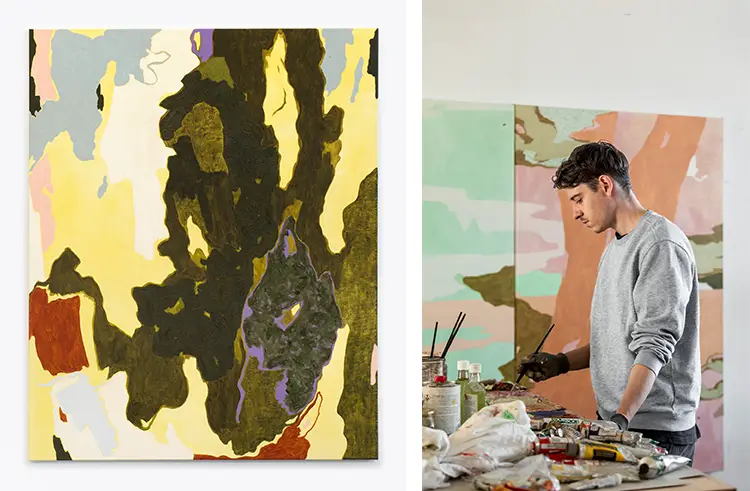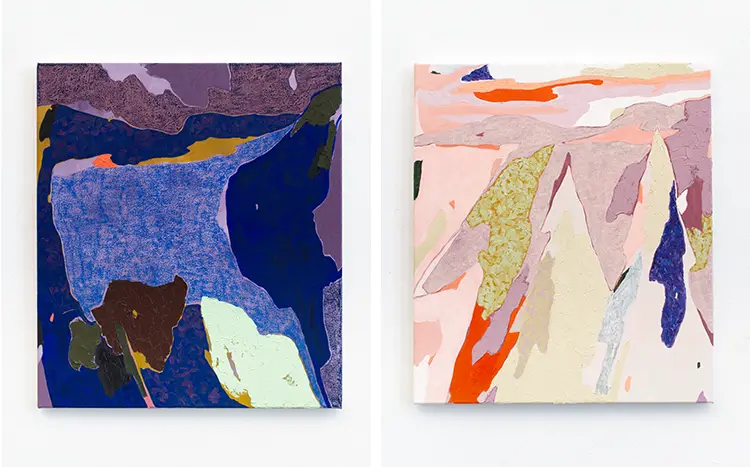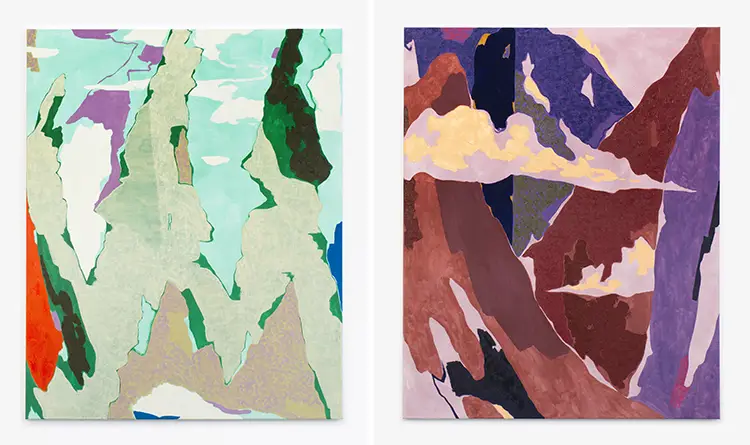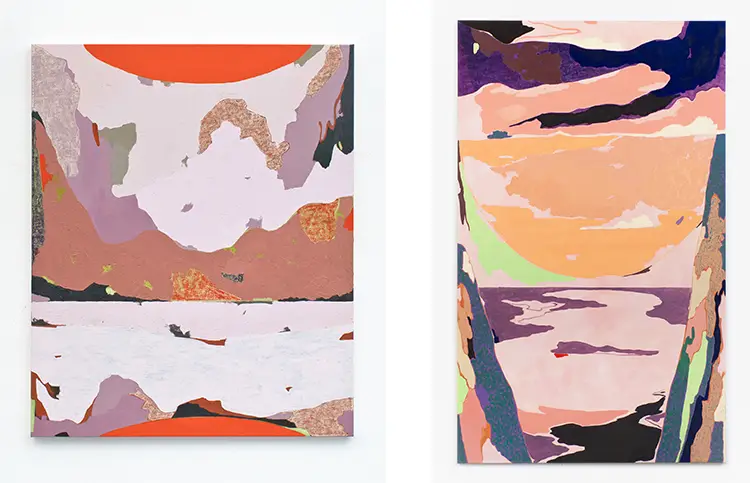Suspended Between Chaos and Calm
The work of Raffael Bader sits at the intersection of perception and emotion, offering viewers more than just aesthetic landscapes—it offers reflections of their inner worlds. Known for his evocative, semi-abstract compositions, Bader’s art bridges the natural world with psychological terrain, transforming the external environment into a deeply personal field of exploration. Through oil paints, oil pencils, and water-miscible media, he constructs images that pulse with both beauty and ambiguity. His paintings resist easy categorization, existing in a state of tension that mirrors the human condition. Rather than simply depict nature, he interrogates the emotional responses it triggers, prompting the viewer to reconsider the line between external and internal landscapes.
At the heart of Bader’s philosophy lies a belief in the stabilizing power of contradiction. He regards the world not as a collection of static certainties, but as a dynamic force field of competing energies—conflict and harmony, chaos and order, clarity and ambiguity. Nature, as he sees it, is an expressive medium through which these opposing forces negotiate their balance. In this way, Bader’s art becomes a means of inquiry: a way to investigate the simultaneous fragility and resilience of life. His canvases do not provide definitive answers but invite contemplative engagement, where one can trace the emotional contours of unresolved questions.
While his subject matter may initially resemble traditional landscapes, Bader is less concerned with depicting a specific location than with capturing a mood or emotional atmosphere. Trees, water, and horizons appear in his work, but they are refracted through an internal lens that emphasizes sensation over representation. This blend of familiarity and abstraction invites viewers to project their own memories, associations, and psychological states onto the work. The landscapes he paints are not maps of terrain but cartographies of thought and feeling—spaces that echo both natural formations and subconscious reflections.

Raffael Bader: Sketches of the Subconscious
Bader’s creative process begins not with grand visions, but with modest, intuitive drawings he calls “notes.” These are spontaneous, unrefined sketches that capture a fleeting sense—a shape, a color, a sensation—that might otherwise be lost. They serve as emotional cues rather than formal plans, allowing the painting to unfold in a way that remains open to transformation. This approach favors intuition over structure, giving each work the freedom to evolve without predetermined constraints. By refusing to impose rigid order from the outset, Bader ensures that the energy and immediacy of his initial impulse remain present throughout the work.
Once a note has sparked a painting, Bader enters a phase of response rather than control. He follows the trajectory of the image as it takes on its own form, engaging in a quiet dialogue between hand, surface, and sensation. This improvisational method sustains the sense of aliveness in his work, reinforcing his commitment to openness and unpredictability. Rather than forcing the image toward completion, he allows ambiguity and chance to shape the outcome. This creates a visual tension that mirrors the emotional tensions he explores—suggesting that meaning is not delivered but discovered through engagement.
His resistance to perfection further underscores this ethos. For Bader, perfection represents closure, a static endpoint that extinguishes possibility. In contrast, he embraces the vitality of imperfection, viewing it as a condition of authenticity. His brushwork, textures, and layered compositions reflect this belief: rough edges are not corrected, and empty spaces are not compulsively filled. Instead, the surface of the canvas remains porous, leaving room for the viewer’s perception to complete the image. This intentional incompletion opens the door to multiple interpretations, making each viewing a personal encounter rather than a prescribed message.

Emotional Landscapes Beyond Geography
Growing up in South Germany provided Bader with an early, visceral connection to the natural world. Yet it was his extensive travels through continents like Australia, Asia, and Latin America that truly expanded his visual and emotional vocabulary. These journeys exposed him to a spectrum of environmental and cultural dynamics, which in turn deepened his sensitivity to transition, contrast, and rhythm. Each place left its mark—not in the form of literal motifs, but as impressions, energies, and movements that now infuse his work. The act of traveling became, for Bader, a kind of apprenticeship in perceiving the subtle layers that constitute both outer and inner worlds.
These accumulated experiences shaped his understanding of landscape as a metaphorical space rather than a fixed location. The constant shift in climate, culture, and visual rhythm taught him to see the world as fluid and contingent, never static. This worldview translates into paintings that resist literalism and instead suggest emotional climates. Horizons blur, forms dissolve, and colors vibrate with uncertain tension. The work conveys the sensation of moving through a place that is not quite external, not quite internal—a threshold space where memory, longing, and perception intersect.
Through this lens, his landscapes become vessels of introspection. They are informed as much by personal emotion as by environmental observation. Bader treats painting as a psychological act, one that maps his internal states as much as it does visual stimuli. He describes his images as responses to inner questions—doubts, longings, or intuitions that seek form. The resulting work bears the imprint of this inquiry, presenting images that are emotionally charged yet visually elusive. They evoke the kind of space that cannot be found on a map, but which feels instantly recognizable to anyone who has ever looked inward.

Raffael Bader: The Space Between Thought and Feeling
The materials Bader employs are as intentional as the ideas behind them. His use of water-miscible oil paints allows him to navigate a broad textural spectrum—from translucent washes that suggest fragility, to thick, tactile strokes that assert presence. Oil pencils add a further layer of spontaneity, permitting drawn marks to coexist with painted ones, and allowing for moments of direct, almost diaristic expression. He avoids overworking the surface, choosing instead to preserve areas of openness that keep the composition breathable. The canvas, in his hands, is not a sealed image but a living surface that accommodates both mark and void.
This fusion of materials reflects the dualities central to his philosophy: presence and absence, form and formlessness, gesture and restraint. The technical choices serve the conceptual aim of evoking emotional resonance without dictating interpretation. His works never descend into decorative abstraction nor do they retreat into illustrative depiction. Instead, they maintain a tension that sustains the viewer’s engagement, drawing them into a space where ambiguity is not a lack of meaning but a source of depth. The emotional charge in his work stems from this balance—each decision, whether compositional or material, is guided by the desire to make the unseen felt.
Bader’s recognition through grants such as the “Denkzeit” and the Stiftung Kunstfonds scholarship provided vital support during critical periods of artistic development. These opportunities offered him the space to explore without the constraints of productivity or commercial pressure. Particularly during the global uncertainty of 2020, the “Denkzeit” grant served as both a refuge and a catalyst, allowing him to deepen his introspective practice. Exhibitions across Switzerland, the USA, and Germany have further extended the conversation around his work, revealing its universal resonance. Viewers from diverse backgrounds respond to the emotional undercurrents, finding in his paintings a mirror for their own inner landscapes—proof that the personal, when rendered with honesty and openness, can become profoundly collective.








